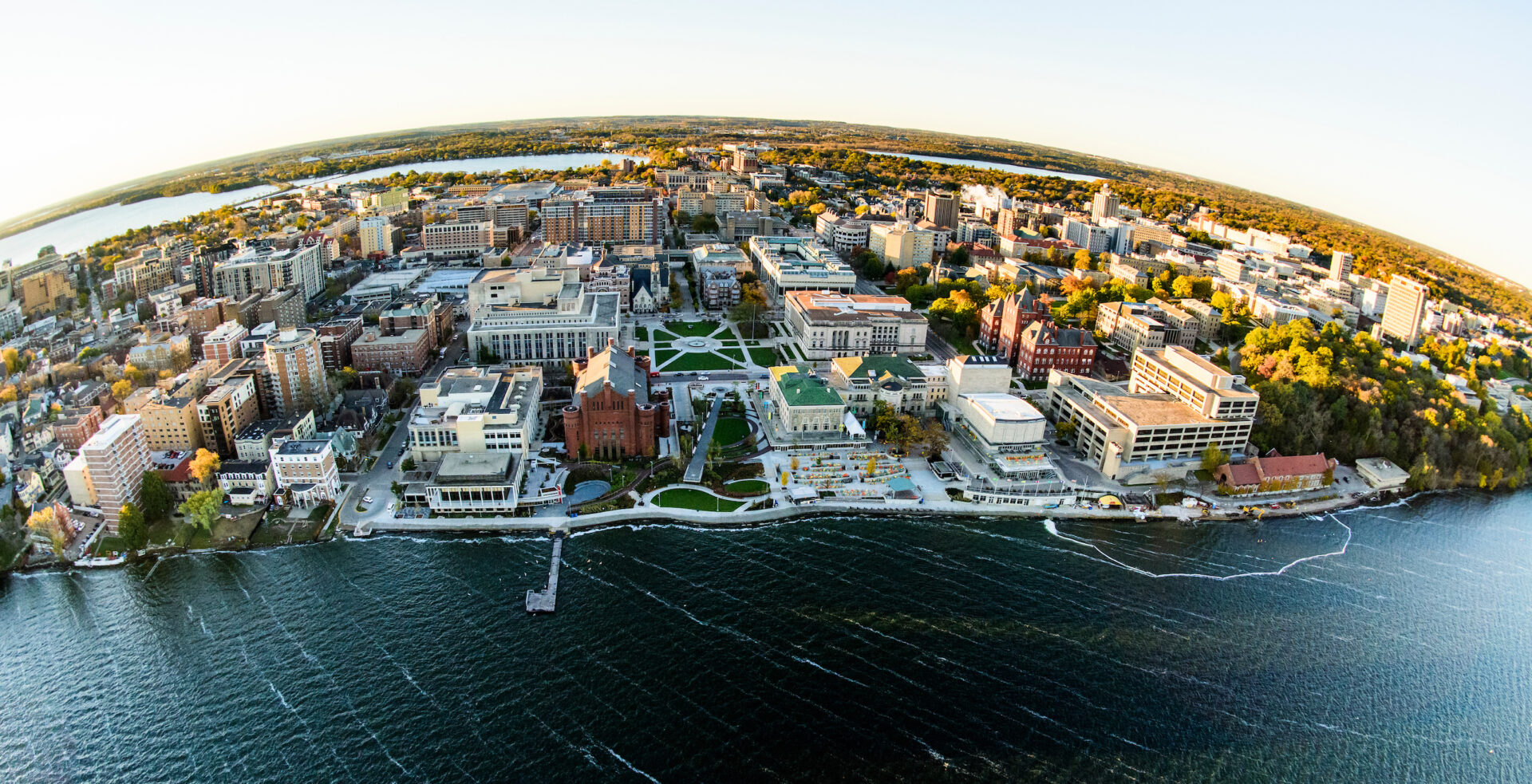Organizations with Workshops and Resources
Leopold Leadership Program – Resources
National Conservation Leadership Institute
National Academy of Sciences Center for Public Engagement with Science & Technology
Communicating Science Workshop
National Academy of Sciences – The Science & Entertainment Exchange
Examples and Ideas
-
- Consider expanding your communication skills and venues – develop “elevator speeches” analogies, story-telling, interview skills, use of alternative technology like YouTube to summarize research projects, etc.
- Explore innovative partnerships to advance your science mission for water resource management and conservation(e.g. National Academies of Science and entertainment industry teamed up to create The Science & Entertainment Exchange). Our ability as scientists to communicate with citizens is one of the biggest challenges to making our science matter.
- Consider attending or hosting a workshop by one of the national organizations that provide training on this topic, such as AAAS or The Alan Alda Center for Communicating Science or COMPASS.
- Exchange ideas with other water resources or conservation professionals! There is a lot we can learn from each other in this “experiment” to make more effective the role of science in society.
Many resources on communicating science can be found at:
http://www.fws.gov/oregonfwo/ToolsForLandowners/RiverScience/SciCommunication.asp
Tools
How to Give a Stellar Presentation
Examples of Creative Scientific Communicators, Venues or Projects
Forward Motion — The Sky’s the Limit
Radio Lab — sometimes features science issues through stories
Natural Histories project (listen to conversations on the rebirth of Natural History)
Wisconsin Sea Grant River Talk Series
Olmsted, L. March 19, 2015. Jaws: Cape Cod Beach Resort Offers Real-Life Shark Adventures. Forbes. Public participants help fund shark research.
2014 Amazon River Adventure — Public participants help fund global rivers research and engage the public in the work.
Examples of How to Encourage Creative Portrayal of Science Through the Arts
Where science meets art NPR Morning Edition series
Science meets art: 2015 Cool Science Images unveiled
“Dance your Ph.D.” contest
Books
Request a Book From Wisconsin’s Water Library. Any of these books are available for check out by any Wisconsin resident. To request a book, you’ll need the book’s title and call number. Then use the Wisconsin Water Library’s request form to have the book sent to you.
Take a look at the library’s lending policies.
Books
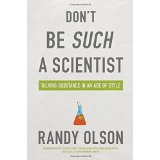
Don’t be Such a Scientist – Talking Substance in the Age of Style (Randy Olson, 2009) Wisconsin Water Library call number 232390
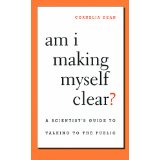
Am I Making Myself Clear? (Cornelia Dean, 2012) Wisconsin Water Library call number 271466
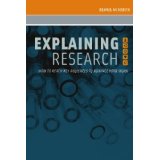
Explaining Research – How to Reach Key Audiences to Advance Your Work (Dennis Meredith, 2010) Wisconsin Water Library call number 271403

Connection: Hollywood Storytelling Meets Critical Thinking (Randy Olson et al., 2013) Wisconsin Water Library call number 271475

Escape from the Ivory Tower: Your Guide to Making your Science Matter (Nancy Baron, 2010) Wisconsin Water Library call number 231470
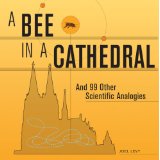
A Bee in a Cathedral – And 99 Other Scientific Analogies (Joel Levy, 2011) Wisconsin Water Library call number 271418
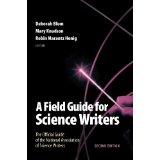
A Field Guide for Science Writers (Deb Blum et al., 2nd edition, 2006) Wisconsin Water Library call number 271396
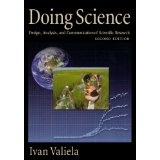
Doing Science: Design, Analysis, and Communication of Scientific Research (Ivan Valiela, 2nd edition, 2009) Wisconsin Water Library call number 271469
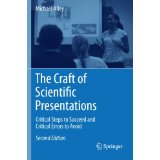
The Craft of Scientific Presentations: Critical steps to succeed and critical errors to avoid (Michael Alley, 2013) Wisconsin Water Library call number 271468
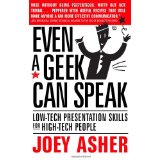
Even a Geek can Speak – Low-tech Presentation Skills for High-tech People (Joey Asher, 2001) Wisconsin Water Library call number 271474
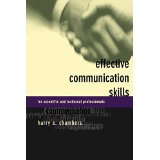
Effective Communication Skills for Scientific and Technical Professionals (Harry E. Chambers, 2001) Wisconsin Water Library call number 271472
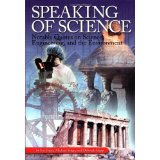
Speaking of Science – Notable Quotes on Science, Engineering, and the Environment (Jon Fripp et al., 2000) Wisconsin Water Library call number 271471
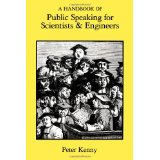
A Handbook of Public Speaking for Scientists & Engineers (Peter Kenny, 1982) Wisconsin Water Library call number 271476
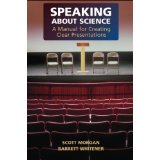
Speaking About Science: A Manual for Creating Clear Presentations (Scott Morgen and Barrett Whitener, 2006) Wisconsin Water Library call number 271473
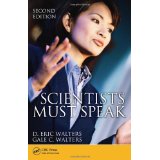
Scientists Must Speak (D. Eric Walters and Gale C. Walters, 2nd edition, 2010) Wisconsin Water Library call number 271467
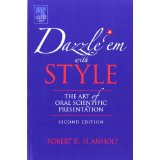
Dazzle ‘em with Style: The Art of Oral Scientific Presentations (Robert R.H. Anholt, 2ndedition, 2005) Wisconsin Water Library call number 271477
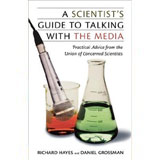
A Scientist’s Guide to Talking to the Media: Practical Advice from the Union of Concerned Scientists (Richard Hayes and Daniel Grossman, 2006) Wisconsin Water Library call number 271478
See additional books on public speaking at –http://www.fws.gov/oregonfwo/ToolsForLandowners/RiverScience/SciCommunication.asp
Articles and Essays
Additional Reading Related to the Challenges of Science Communications and Policy-Making
Includes reading related to the challenges of science communications and policy-making, barriers to actionable science and the challenges of incorporating science into society.
Achenbach, J. March 2015. The Age of Disbelief – Why Do So Many Reasonable People Doubt Science? National Geographic. http://ngm.nationalgeographic.com/2015/03/science-doubters/achenbach-text
Singh, G.C., J. Tam, T.D. Sisk, S.C. Klain, M.E. Mach, R.G. Martone, and K.M.A. Chan. 2014. A more social science: barriers and incentives for scientists engaging in policy. Frontiers in Ecology and the Environment 12:161-166. http://www.esajournals.org/doi/abs/10.1890/130011
Dietz, T. 2013. Bringing values and deliberation to science communication. Proceedings of the National Academy of Sciences 110:14081-14087. http://www.pnas.org/content/110/Supplement_3/14081.full.pdf
Von Winterfeldt, D. Bridging the gap between science and decision making. Proceedings of the National Academy of Sciences 110:14055-14061.
Fischoff, B. 2013. The sciences of science communication. Proceedings of the National Academy of Sciences 110:14033-14039. http://www.pnas.org/content/110/Supplement_3/14033.full.pdf
(Great quote within – “The goal of science communication is not agreement, but fewer,better disagreements. If that communication affords people a shared understanding of the facts, then they can focus on value issues, such as…”)
Fischoff, B. and D.A. Scheufele. 2014. The sciences of science communication II. Proceedings of the National Academy of Sciences 111:13583-13584. http://www.pnas.org/content/111/Supplement_4/13585.full.pdf
Scheufele, D.A. 2014. Science communication as political communication. Proceedings of the National Academy of Sciences 111:13585-13592. http://www.pnas.org/content/111/Supplement_4/13585.full.pdf
Fisk, S.T. and C. Dupree. 2014. Gaining trust as well as respect in communicating to motivated audiences about science topics. Proceedings of the National Academy of Sciences 111:13593-13597. http://www.pnas.org/content/111/Supplement_4/13593.full.pdf
Jamieson, K.H. and B.W. Hardy. 2014. Leveraging scientific credibility about Arctic sea ice trends in a polarized political environment. Proceedings of the National Academy of Sciences 111:13598-13605. http://www.pnas.org/content/111/Supplement_4/13598.full.pdf
Pidgeon, N., C. Demski, C. Butler, K. Parkhill, and A. Spence. 2014. Creating a national citizen engagement process for energy policy. Proceedings of the National Academy of Sciences 111:13606-13613. http://www.pnas.org/content/111/Supplement_4/13606.full.pdf
Dahlstrom, M. 2014. Using narratives and storytelling to communicate science with nonexpert audiences. Proceedings of the National Academy of Sciences 111:13614-13620. http://www.pnas.org/content/111/Supplement_4/13614.full.pdf
Medin, D.L. and M. Bang. 2014. The cultural side of science communication. Proceedings of the National Academy of Sciences 111:13621-13626. http://www.pnas.org/content/111/Supplement_4/13621.full.pdf
Downs, J.S. 2014. Prescriptive scientific narratives for communicating usable science. Proceedings of the National Academy of Sciences 111:13627-13633. http://www.pnas.org/content/111/Supplement_4/13627.full.pdf
Ratner, R.K. and J. Riis. 2014. Communicating science-based recommendations with memorable and actionable guidelines. Proceedings of the National Academy of Sciences 111:13634-13641. http://www.pnas.org/content/111/Supplement_4/13634.full.pdf
Milkman, K.L. and J. Berger. 2014. The science of sharing and the sharing of science. Proceedings of the National Academy of Sciences 111:13642-13649. http://www.pnas.org/content/111/Supplement_4/13642.full.pdf
Contractor, N.S. and L.A. DeChurch. 2014. Integrating social networks and human social motives to achieve social influence at scale. Proceedings of the National Academy of Sciences 111:13650-13657. http://www.pnas.org/content/111/Supplement_4/13650.full.pdf
Wong-Parodi, G., and B.H. Strauss. 2014. Team science for science communication. Proceedings of the National Academy of Sciences 111:13658-13663. http://www.pnas.org/content/111/Supplement_4/13658.full.pdf
Fischoff, B. and A.L. Davis. 2014. Communicating scientific uncertainty. Proceedings of the National Academy of Sciences 111:13664-13671. http://www.pnas.org/content/111/Supplement_4/13664.full.pdf
Other Professional Barriers to Actionable Science
Goring, S.J., K.C. Weathers, W.K. Dodds, P.A. Soranno, L.C. Sweet, K.S. Cheruvelil, J.S. Kominoski, J.Ruegg, A.M. Thorn, and R.M. Utz. 2014. Improving the culture of interdisciplinary collaboration in ecology by expanding measures of success. Frontiers in Ecology and the Environment 12:39-47. http://www.esajournals.org/doi/pdf/10.1890/120370
Hansen, G.J.A., S. Sadro, M.M. Baustian, and B.A. Stauffer. 2014. Is it time to redefine the “alternative” career path for ecologists? Limnology and Oceanography Bulletin 23:2-5. http://onlinelibrary.wiley.com/doi/10.1002/lob.20142311/pdf
The measure of research merit – http://www.sciencemag.org/content/346/6214/1155
Diversity Challenges
http://www.nature.com/news/diversity-1.15913
Essays on the Challenges Associated with Incorporating Science in Society
Siitari, K., J. Martin, and W.W. Taylor. 2014. Information flow in fisheries management: systemic distortion within agency hierarchies. Fisheries 39:246-250. http://www.tandfonline.com/doi/pdf/10.1080/03632415.2014.915814
Biba, E. June 3, 2013. Where is the Next Carl Sagan? Before People Will Understand Science, Scientists Must Understand People. Popular Science. http://www.popsci.com/science/article/2013-05/not-just-facts (Excellent essay on selective perception)
Hoffman, A.J. February 9, 2015. Commentary – Isolated scholars: Making bricks, not shaping policy. The Chronicle of Higher Education. http://chronicle.com/article/Isolated-Scholars-Making/151707/
Clarke, M. and S. Lawler. December 31, 2014. Why we need to listen to the real experts in science. The Conversation. http://theconversation.com/why-we-need-to-listen-to-the-real-experts-in-science-35501
Nichols, T. January 17, 2014. The Death of Expertise. The Federalist. http://thefederalist.com/2014/01/17/the-death-of-expertise/


